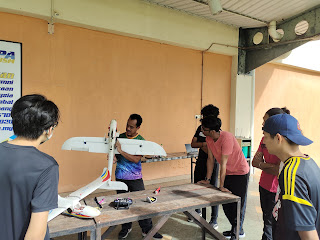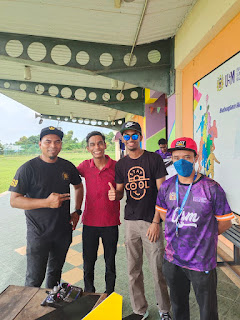The Pre-game
This post is all about the preparation done in order to fly the RC plane. We weren’t just given planes to fly. There was a series of preparation to fly our plane. First of all, we needed to identify and learn the function and names of the switches on the RC remote. We played around with the remote to familiarize ourselves with the functions.
Secondly, we mastered the maneuvers of the RC plane using the Flight simulator provided in the Flight Mechanics lab. The basics; roll, pitch, yaw, angle of attack, landing, take off, etc. We also did have real RC plane flying experience but on trainer mode, where our remote will connect to the instructor’s remote. Using this method if anything went wrong the instructor would easily take over with the flip of a switch.
These are the criteria needed for us to fly solo:
- Landing
- Take off
- Level flying
- Figure 8
- Round flying
We also watched first flight sessions of Master’s and PhD’s students just the motivate us more. We called it the test flight day. We managed to witness a lot of different RC planes, drones, Vitol and more. The post-grad student was using high-end materials as they had a better budget. The flight controller was different, the motor was different, and the battery was different. Some of them worked on autonomous features and had more complex plane designs. They had "advanced" planes.
Those "advanced" RC planes had a different kind of routine before it was flown, but the basics like checking the ailerons and rudders were still the same. We had to configure its GPS location, which was done by following the set of rules prompted on the graphic user interface(GUI). For instance, we had to hold the plane upside down, right side up, sideways, and rotate the plane 180 deg clockwise. Then we had to calibrate the pitot tube which was responsible to determine the speed of flow. That was done by blowing on the pitot tube.






Comments
Post a Comment